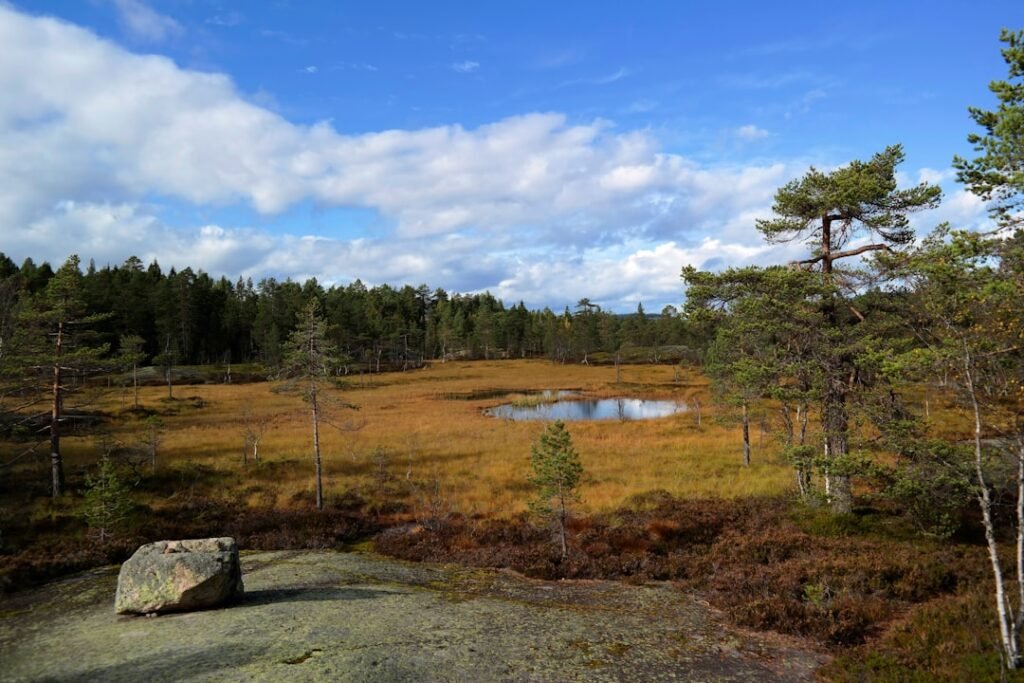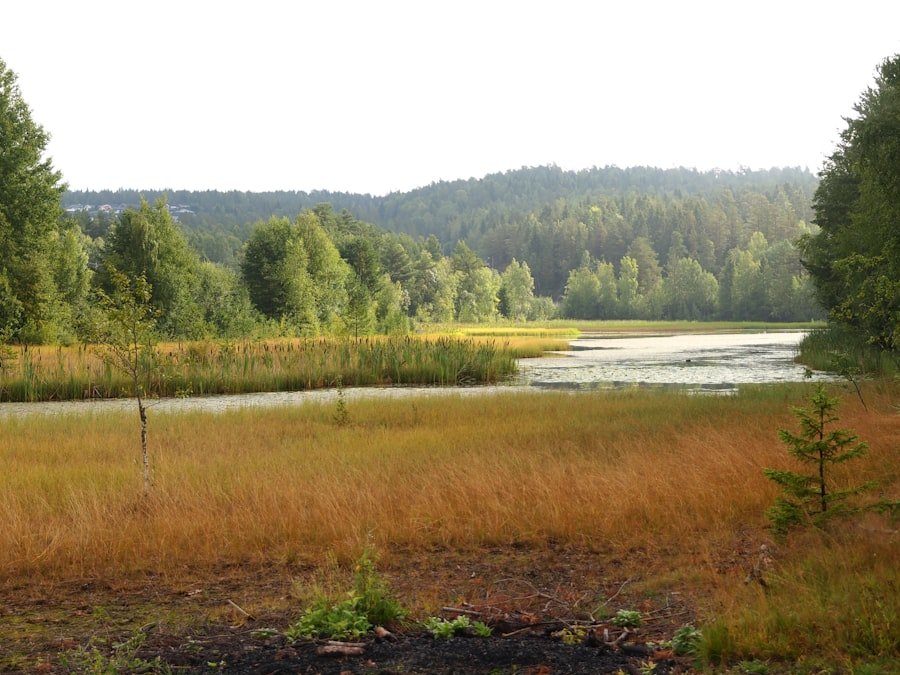

How to Read a Norwegian Menu: Key Food and Drink Phrases
Norwegian cuisine is a delightful tapestry woven from the threads of its geography, climate, and cultural heritage. Nestled between the rugged mountains and the vast coastline, Norway boasts an abundance of natural resources that have shaped its culinary landscape. The country’s long-standing traditions of fishing, farming, and foraging have resulted in a cuisine that is both hearty and wholesome, reflecting the rhythms of nature and the changing seasons.
From the fjords to the forests, Norwegian food is a celebration of local ingredients, often prepared with simplicity and care. At the heart of Norwegian cooking lies a deep respect for the land and sea. Traditional dishes often feature fresh fish, game meats, root vegetables, and dairy products, all of which are staples in the Norwegian diet.
The influence of the harsh climate is evident in the preservation methods employed by Norwegians, such as smoking, curing, and pickling, which have been passed down through generations. As you embark on a culinary journey through Norway, you will discover not only the flavours of the land but also the stories and traditions that accompany each dish. The NLS Norwegian Language School offers comprehensive courses for all levels. Register today to get started.
Table of Contents
ToggleSummary
- Norwegian cuisine is known for its use of fresh and locally sourced ingredients, with a focus on seafood, game, and dairy products.
- Norwegian menus typically include a variety of appetizers, main courses, and desserts, with an emphasis on seasonal and traditional dishes.
- When dining in Norway, it’s helpful to know common food phrases such as “Takk for maten” (Thank you for the food) and “Kan jeg få regningen?” (Can I have the bill?).
- Popular Norwegian drink phrases include “En kopp kaffe, takk” (A cup of coffee, please) and “Et glass øl, vær så snill” (A glass of beer, please).
- It’s important to be aware of dietary restrictions and allergies when dining in Norway, and to communicate these clearly to restaurant staff.
Understanding Norwegian Menu Structure
Navigating a Norwegian menu can be an enlightening experience, as it often reflects the country’s culinary ethos. Typically, menus are structured in a straightforward manner, with sections dedicated to appetisers (forretter), main courses (hovedretter), and desserts (desserter). This clear organisation allows diners to easily identify their choices and understand the flow of a traditional meal.
Additionally, many restaurants will highlight seasonal dishes or local specialities, encouraging patrons to explore the flavours unique to that time of year. When dining out in Norway, it is common to find a variety of seafood options prominently featured on menus, given the country’s extensive coastline. Fish such as salmon, cod, and mackerel are often prepared in various ways, from grilling to curing.
Meat dishes are also prevalent, with lamb and reindeer being popular choices that reflect Norway’s rich hunting traditions. Vegetarians will find that many restaurants offer plant-based options, though it may be less common than in other countries. Understanding this structure will enhance your dining experience and allow you to appreciate the nuances of Norwegian cuisine.
Common Norwegian Food Phrases

Familiarising yourself with common Norwegian food phrases can significantly enhance your dining experience in Norway. Knowing how to ask for recommendations or inquire about ingredients can make your interactions with waitstaff more enjoyable. For instance, if you wish to ask for a menu in English, you might say, “Har dere en meny på engelsk?” which translates to “Do you have a menu in English?” This simple phrase can open doors to better communication and understanding.
Additionally, learning phrases related to dietary preferences can be beneficial. If you have specific dietary restrictions or allergies, it is essential to communicate these clearly. For example, saying “Jeg er allergisk mot nøtter” means “I am allergic to nuts.” Such phrases not only help ensure your safety but also demonstrate respect for local customs and practices.
By embracing the language of food, you can immerse yourself more fully in the Norwegian culinary experience.
Common Norwegian Drink Phrases
In Norway, beverages play an integral role in the dining experience, complementing meals and enhancing flavours. Familiarising yourself with common drink phrases can elevate your interactions at restaurants or cafes. For instance, if you would like to order water, you can say “Kan jeg få vann?” which means “Can I have water?” This simple request can lead to either sparkling or still water, depending on your preference.
When it comes to alcoholic beverages, Norway has a rich tradition of brewing and distilling. If you wish to explore local beers or aquavit—a traditional Scandinavian spirit—you might ask for recommendations by saying “Hva anbefaler du?” which translates to “What do you recommend?” This phrase not only shows your interest in local drinks but also invites the staff to share their expertise. Understanding these drink phrases will enhance your overall dining experience and allow you to savour the full spectrum of Norwegian beverages.
Dietary Restrictions and Allergies
As with any culinary culture, understanding dietary restrictions and allergies is crucial when dining in Norway. While Norwegians are generally accommodating and aware of food allergies, it is always wise to communicate your needs clearly. Many restaurants are accustomed to dealing with various dietary requirements and will often have options available for those who are vegetarian, vegan, or gluten-free.
It is advisable to learn specific phrases related to your dietary restrictions in Norwegian. For example, if you are lactose intolerant, you can say “Jeg kan ikke spise melk” meaning “I cannot eat milk.” This clarity helps ensure that your meal is prepared according to your needs. Additionally, many establishments are increasingly aware of cross-contamination issues and will take precautions when preparing food for those with allergies.
By being proactive about your dietary needs, you can enjoy the diverse offerings of Norwegian cuisine without worry.
Regional Specialties and Local Ingredients

Norwegian cuisine is deeply influenced by its diverse regions, each boasting unique specialities that reflect local ingredients and traditions. The coastal areas are renowned for their seafood; dishes like lutefisk (dried fish) and rakfisk (fermented fish) are celebrated delicacies that showcase the country’s maritime heritage. In contrast, the inland regions focus more on game meats such as reindeer and elk, often prepared in hearty stews or roasted dishes that warm the soul during long winters.
Local ingredients play a pivotal role in defining regional dishes. For instance, in the northern regions of Norway, cloudberries—a rare berry found in marshy areas—are often used in desserts or jams. Meanwhile, southern Norway is known for its rich dairy products, including brown cheese (brunost), which has a distinct caramel flavour and is enjoyed on bread or waffles.
Exploring these regional specialities not only enriches your culinary experience but also provides insight into Norway’s cultural diversity.
Ordering and Etiquette in Norwegian Restaurants
When dining in Norway, understanding local etiquette can enhance your experience significantly. Generally speaking, Norwegians value politeness and simplicity in their interactions. When entering a restaurant, it is customary to greet the staff with a friendly “Hei” (Hello) or “God dag” (Good day).
Once seated, you may be presented with menus shortly after; it is polite to take your time reviewing them before making a decision. When ordering food or drinks, it is common practice to address the server directly rather than calling out or waving for attention. A simple “Unnskyld” (Excuse me) will suffice when you wish to place your order or ask questions about the menu.
Tipping is appreciated but not obligatory; rounding up the bill or leaving a small percentage is considered generous. By adhering to these social norms and practices, you will not only enjoy your meal but also foster positive interactions with locals.
Exploring Norwegian Seafood Options
Norway’s extensive coastline offers an impressive array of seafood options that are integral to its culinary identity. Fresh fish such as salmon, cod, and halibut are staples on many menus across the country. One must-try dish is “klippfisk,” which consists of dried and salted cod that has been rehydrated before cooking—a testament to Norway’s long-standing fishing traditions.
In addition to fish, shellfish such as shrimp and crab are also popular choices among locals and visitors alike. Many coastal towns host seafood festivals where you can sample various dishes prepared by local chefs using freshly caught ingredients. Exploring these seafood options not only allows you to savour exquisite flavours but also connects you with Norway’s rich maritime culture.
Traditional Norwegian Desserts and Pastries
No exploration of Norwegian cuisine would be complete without indulging in traditional desserts and pastries that reflect the country’s sweet tooth. One beloved treat is “koldtbord,” a buffet-style spread featuring an array of cakes and pastries served during festive occasions. Among these delights is “krumkake,” a delicate waffle cookie rolled into a cone shape and often filled with whipped cream or berries.
Another iconic dessert is “lefse,” a soft flatbread made from potatoes or flour that can be enjoyed sweet or savoury. When prepared as a sweet treat, lefse is typically spread with butter and sugar before being rolled up for easy consumption. These traditional desserts not only satisfy cravings but also provide insight into Norway’s culinary heritage and communal dining practices.
Exploring Norwegian Beverages
Norwegian beverages offer a delightful complement to its cuisine, ranging from traditional spirits to locally brewed beers. Aquavit is perhaps the most famous Norwegian spirit; this flavoured liquor is often enjoyed during festive gatherings and pairs beautifully with seafood dishes. The distinct herbal notes of aquavit make it a unique addition to any meal.
In addition to spirits, Norway has a burgeoning craft beer scene that has gained international recognition in recent years. Many breweries focus on using local ingredients such as barley and hops sourced from nearby farms. Sampling these craft beers allows visitors to appreciate the creativity and innovation present within Norway’s beverage industry while enjoying flavours that reflect the country’s natural bounty.
Tips for Exploring Norwegian Food Markets and Street Food
Exploring food markets and street food stalls is an excellent way to immerse yourself in Norway’s culinary culture while discovering local flavours at affordable prices. Markets such as Mathallen Oslo offer a vibrant atmosphere where vendors showcase their artisanal products ranging from cured meats to handmade cheeses. Engaging with vendors provides an opportunity to learn about their craft while sampling delicious bites.
Street food is also gaining popularity across Norway’s cities; food trucks often serve up modern interpretations of traditional dishes alongside international cuisine influences. Be sure to try “pølse med lompe,” a classic Norwegian hot dog served in a soft flatbread—perfect for enjoying on-the-go while exploring urban landscapes. By venturing into these markets and street food scenes, you’ll uncover hidden gems that reflect both contemporary trends and time-honoured traditions within Norwegian cuisine.
As you embark on your culinary adventure through Norway, consider enhancing your language skills at the NLS Norwegian Language School in Oslo. Their comprehensive courses cater to all levels of proficiency and focus on practical language use in everyday situations—including dining out! By learning essential phrases related to food and drink at NLS, you’ll feel more confident navigating menus and engaging with locals during your gastronomic explorations.
Embrace this opportunity to deepen your understanding of both the language and culture while savouring all that Norwegian cuisine has to offer!
Start your Norwegian language journey with Oslo’s leading school.
If you want to learn Norwegian, you can register for classes here. We look forward to hearing from you and helping you become fluent in Norwegian.





